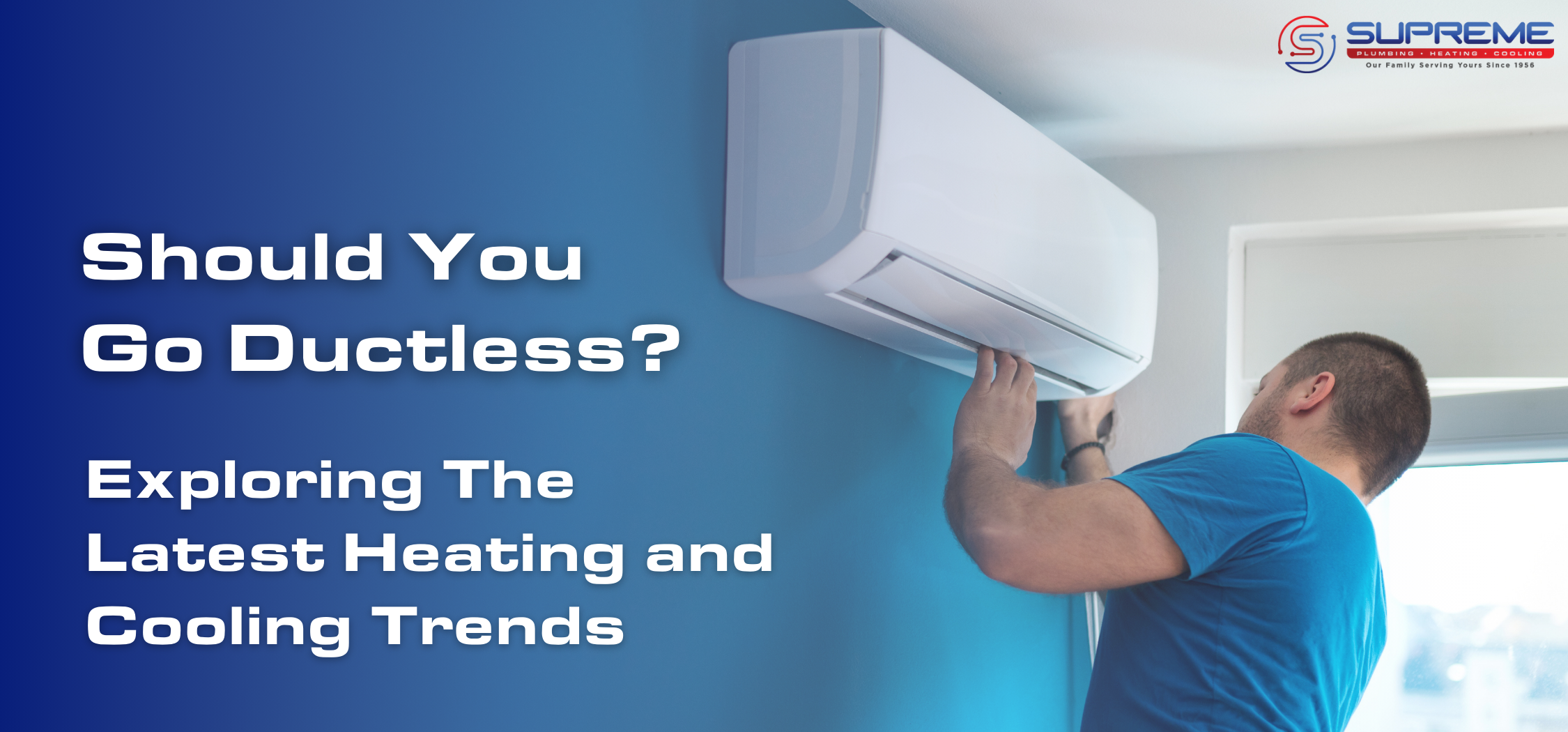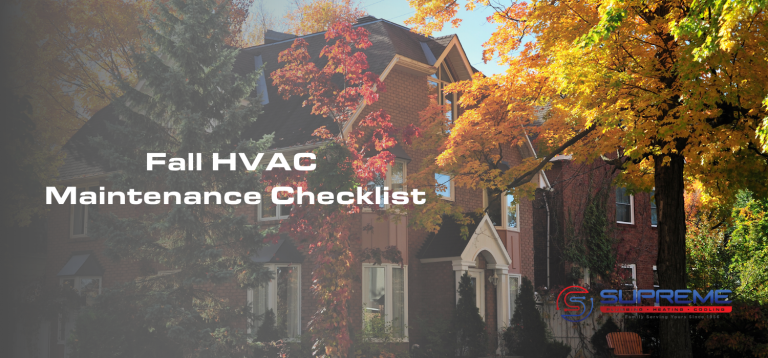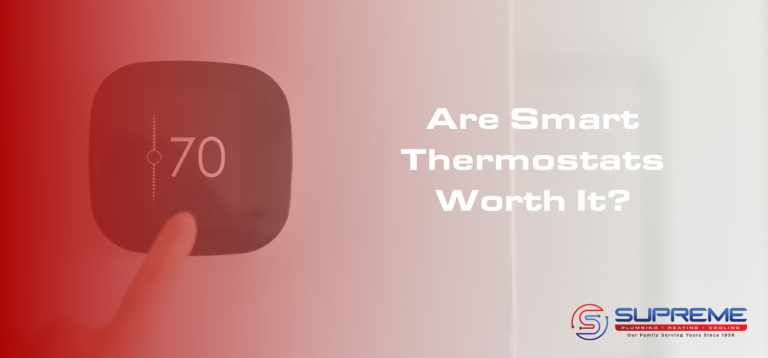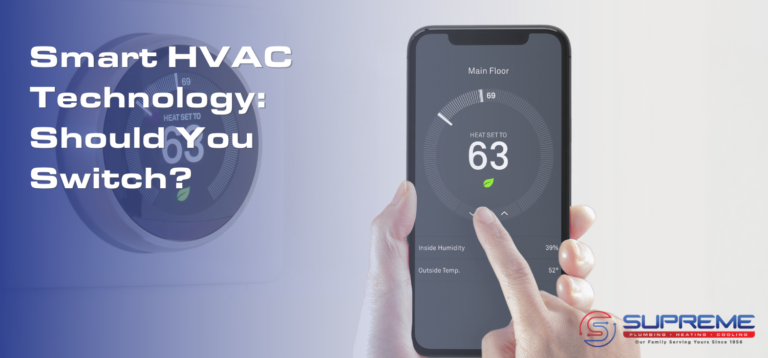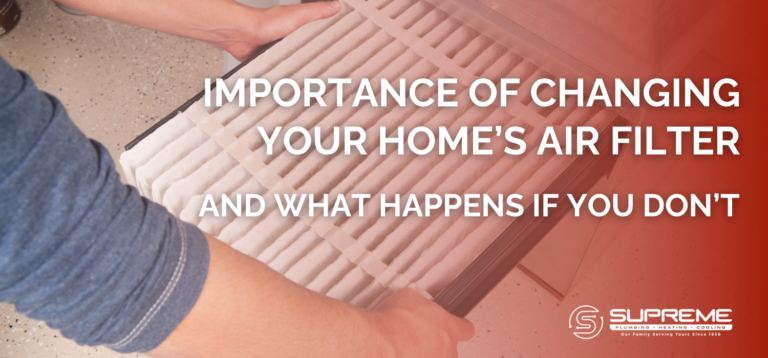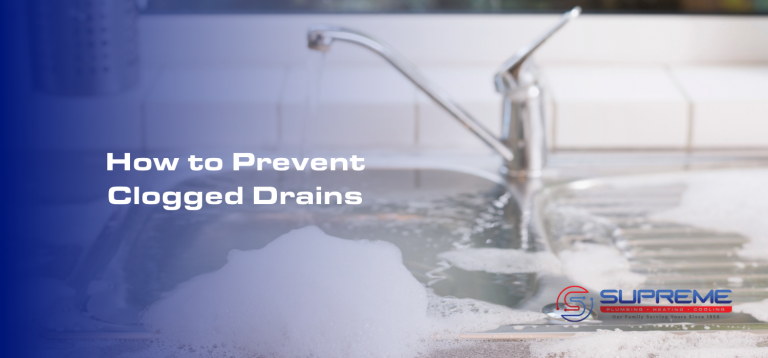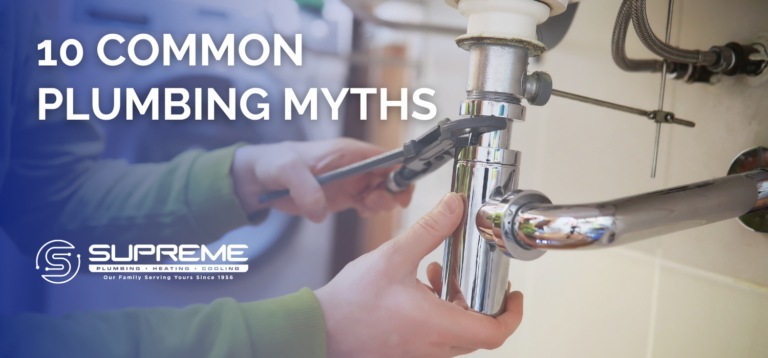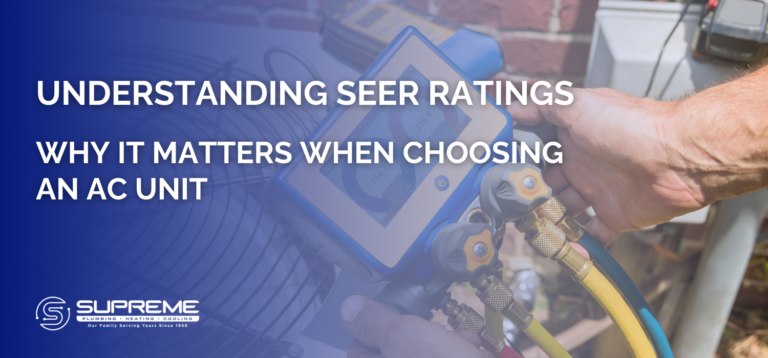So, what is ductless heating and cooling anyway? You may or may not have heard of this nontraditional HVAC system before. If you have, you may be considering if it’s worth installing in your home.
But before you decide whether or not a ductless heating and cooling system is the best option, you should understand how they are different from traditional HVAC systems.
Traditional vs. Ductless HVAC; What’s the Difference?
What exactly is the difference between the traditional HVAC systems, and the latest technology in HVAC? Let’s dive in!
First, let’s look at the ins and outs of a traditional heating and cooling system.
Ductwork Dependence
Traditional heating and cooling systems rely on ductwork to distribute conditioned air throughout the home. The metal ductwork serves as a sort of “highway” for air. It can be extensive and often requires a lot of space in your walls, under your floors, and even in your ceilings.
Centralized Control
With traditional HVAC systems, temperature control is typically “centralized”, meaning the entire home is set to the same temperature. The temperature is usually controlled from one pad or control station on a wall. While some systems may offer zoning capabilities, they often require additional ductwork and equipment.
Space Requirements
As we touched on above, traditional HVAC systems have bulky ductwork that can take up space in your attic, basement, or closet. This may be inconvenient for homes with limited space or architectural constraints.
On the other hand, a ductless heating and cooling system differs greatly.
Duct-Free Design
Ductless systems eliminate the need for the bulky ductwork, offering a more space-saving solution. This makes them a great choice for homes where duct installation is impractical or may cost too much money to install.
Zoned Comfort
Ductless systems allow for zoned heating and cooling, meaning you can control the temperature of individual rooms or zones within your home independently. Not only does this help customize your comfort, but also increases energy efficiency by only heating or cooling spaces that are being used.
Flexible Installation
Ductless systems are customizable and versatile in terms of installation options. Indoor air-handling units can be mounted on walls or ceilings, so you can choose the placement best suited for the room.
While traditional HVAC systems have been the go-to for decades, a ductless system is a modern alternative with its own unique benefits. That being said, as a homeowner, it’s important to take all the information into consideration to decide which heating and cooling solution aligns with your preferences and requirements.
Ductless Systems: What Are They Exactly?
Ductless heating and cooling systems work to heat and cool your home without traditional ductwork. You might also hear them referred to as mini-split systems.
A ductless system uses an outdoor compressor unit combined with one or more indoor air-handling units. These are connected to the outdoor unit through a conduit containing refrigerant lines, power cables, and a condensate drain. Indoors, the unit is typically mounted on a wall or ceiling.
There are some major benefits for going ductless, including, but not limited to the following.
Flexibility in Installation
One of the biggest advantages of ductless systems is their flexibility in installation. Since ductless systems don’t require ductwork, they allow installation in many different types of homes. This is especially beneficial for homes that may not be well-suited for the construction that comes with ductwork, like older homes and small apartments.
Zoned Heating and Cooling
Ductless systems let you control the temperature of individual rooms to customize the temperature throughout your home or space. Not only does this make things more comfortable in your home, but it also saves energy!
Energy Efficiency
Speaking of saving energy, ductless systems are known for their energy efficiency in more ways than just controlling each zone. Since they don’t rely on ductwork, which can be prone to leaks and energy loss, they can deliver air directly to the intended space. This in turn results in less wasted energy.
Plus, many ductless systems are equipped with advanced features not available on traditional ducted systems. This includes inverter-driven compressors, which adjust their speed to maintain consistent temperatures while consuming less energy.
Improved Indoor Air Quality
Traditional ductwork accumulates dust, allergens, and other contaminants, which are then re-circulated throughout the home. Yuck!
Because ductless systems don’t have ductwork to collect these particles, dirt and debris isn’t recirculated through the home, leading to improved indoor air quality and a healthier living environment.
Quiet Operation
Ductless systems are known for their whisper-quiet operation. The outdoor compressor unit generates minimal noise, and indoor units are designed to operate quietly, ensuring a peaceful environment within your home.
While there are many benefits to going ductless, it’s also important to consider the cons in going against a traditional ducted system.
Upfront Cost
Because of their energy efficiency, ductless systems offer long-term savings. However, the initial cost of installation can be higher than a traditional HVAC system. Many homeowners find that the benefits outweigh the investment, considering the potential energy savings —but it’s important to consider that upfront investment.
Aesthetics
Some homeowners may be hesitant to install a ductless system due to aesthetic concerns. They aren’t quite as discreet as a small vent in the wall or floor that we’re used to. However, the latest ductless units are designed to blend seamlessly with various interior styles, and are available in sleek and compact options.
Maintenance Requirements
Just like any other HVAC system, ductless systems require regular maintenance. This typically includes cleaning or replacing filters, inspecting the system for any signs of wear or damage, and scheduling professional tune-ups as needed.
Can I Transition to Ductless from a Traditional HVAC System?
If you’re not building a new home from the ground up, you might be wondering if you can transition your home from a traditional HVAC system to a ductless system. There are a lot of questions to consider, like what happens to your current vents? If you’re wondering whether or not to make the switch, here’s what you need to know about the transition:
Consider Co-existence or Replacement
In many cases, homeowners choose to keep their existing HVAC system in place when installing a ductless system for a couple of reasons. First, it allows for supplemental heating and cooling in areas where ductless units may not be installed.
It can also help supplement your ductless system during extreme temperature fluctuations. However, depending on the age and condition of your traditional system, you may also opt to replace it entirely with a ductless system for better heating and cooling coverage.
Zone Integration
Integrating a ductless system with your current HVAC setup can offer the best of both worlds. You can strategically place ductless indoor units in areas where additional heating or cooling is needed to maximize comfort and efficiency. This approach allows you to maintain your existing ducted system while benefiting from the flexibility and energy savings of ductless technology.
Retiring Ductwork
If you decide to transition to ductless heating and cooling, you may wonder what to do with the ductwork in your home. In many cases, ductwork can be sealed off and left in place, especially if it’s impractical or costly to remove. Alternatively, you may choose to have the ductwork professionally removed to free up space and reduce clutter in your home.
Let Supreme PHC Help Guide Your Transition
If you’re considering making the transition to ductless HVAC, you should consult with a qualified professional from Supreme PHC. We can assess your current system, provide recommendations based on your needs and budget, and ensure a seamless transition to ductless technology.
Whether you’re looking to upgrade your existing HVAC system or explore alternative heating and cooling options for a new home, Supreme PHC is here to help.
Contact us today to learn more about our ductless heating and cooling solutions!

